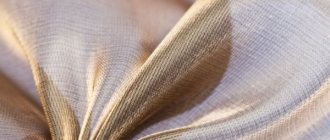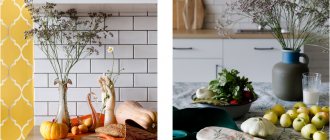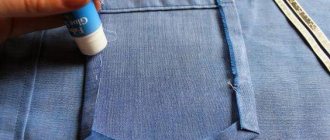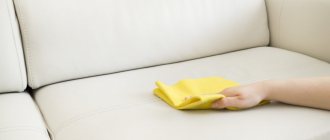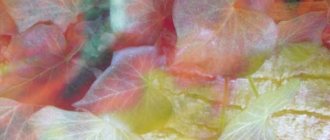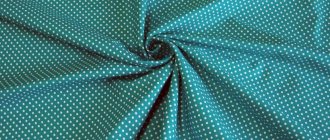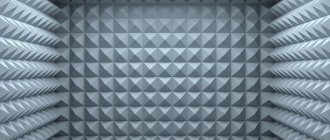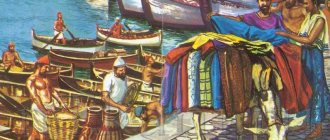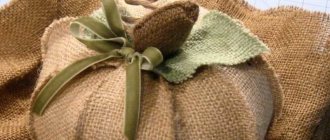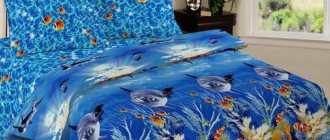What is the difference between fabrics for street and garden furniture and ordinary ones?
Outdoor fabrics differ significantly from home fabrics in a number of properties:
- high wear resistance;
- maximum resistance to burnout;
- waterproof, hydrophobic;
- dirt resistance;
- ease of care and cleaning.
Most often, fabrics for outdoor and garden furniture are made from polyester, synthetics and acrylic. Acrylic fabric for outdoor furniture can be expensive to buy, so if you're on a budget, it's best to look at something synthetic. For water-repellent and waterproof materials, chemical impregnations are used, which are also resistant to stains.
Characteristics, application
Waterproof fabrics, in addition to the ability to repel moisture, have the following properties:
- wear resistance;
- dirt-repellent property;
- thermal stability – preservation of material properties at temperatures from -50 to +110 degrees;
- strength;
- availability;
- ease of care.
Thick waterproof fabric is used for sewing outerwear, demi-season jackets and down jackets. It can also be used to make tablecloths, upholstery for garden furniture, hammocks, and curtains for the garden.
Thin, breathable, waterproof fabric is more in demand in the production of children's and sportswear, and bedding.
Top 6 Best Fabrics for Outdoor Furniture
1. Duspo
Dyuspo is a material consisting of 100% polyester. Raincoat fabric protects from dirt and moisture due to the special weaving and composition of the threads without adding impregnation.
2. Diagonal
It contains a combination of natural and synthetic fibers. The threads of the material are tightly twisted and intertwined at an angle of 45°, forming a rigid, waterproof fabric.
Duck
Water-repellent fabric with hydrophobic coating. Special impregnation protects from rain and dirt, and also prevents rapid fading. Durable and easy to care for material.
Oxford
Synthetic fabric with a special matting fiber weave. Special chemical impregnation makes the fabric waterproof, fireproof and protected from aggressive reagents.
5. Faux leather
Furniture leather is hypoallergenic, elastic, wear-resistant, but afraid of temperature changes. It mainly consists of cotton fibers with a polyurethane coating, which makes the skin elastic.
6. Greta
The fabric is often used under canopies and gazebos; Greta is also used for sewing tents and backpacks. Mixed composition: cotton and polyester 50/50. Due to the twill weave, the material is very durable.
Advantages and disadvantages
The advantages of waterproof materials are:
- reliable protection from adverse weather conditions: wind, rain, snowfall;
- resistance to deformation and ease of maintenance;
- long service life;
- heat preservation.
The disadvantages include:
- instability of nylon material to ultraviolet radiation, as a result of which clothes deteriorate and become unusable;
- insufficient breathability, limiting the access of oxygen to the skin.
You might be interested in the article: “Cleaning material.”
What else you need to know about street fabrics
What is the lifespan of outdoor fabric? +
The service life of garden fabric varies from 5 to 8 years depending on the quality and intensity of use. Despite the relative stability of such textiles, it is better to put outdoor furniture away for the winter in a dry room with a constant temperature - this way you can extend its useful life.
How to use fabric for garden furniture? +
You can cover old home furniture with this material, turning it into garden furniture - it will be cheaper than buying it; you can make a canopy for a swing or a tent for picnics, a gazebo or a sun umbrella; It is also suitable for home interiors.
How to care for outdoor furniture fabrics? +
This material does not require special care. It is machine washable, bleachable and ironable. But for fabrics such as oxford, duspo and other fabrics with chemical impregnation, it is better to set the temperature no higher than 30 degrees. At high temperatures, the water-repellent impregnation may be damaged. Some materials have restrictions (you cannot wring or iron), so if in doubt, it is better to consult a specialist.
Waterproof fabric
Waterproof fabric is most often used to produce clothing for hunters, fishermen, athletes, and the military. But today everyone can buy themselves a demi-season or winter waterproof jacket. A number of scientists were involved in the production of this fabric, working on the thermal insulation, strength and wear resistance of these fabrics.
Content
- The history of the appearance of waterproof fabric
- Production of waterproof fabric
- Properties
- Types of waterproof fabrics and their applications
- Care for most waterproof fabrics
The history of the appearance of waterproof fabric
Fabric with a moisture-resistant coating was invented by Charles Mackintosh. That's why it's called a water-repellent raincoat. The scientist was experimenting with matter, and suddenly rubber accidentally fell on the sleeve. It turned out that the fabric in this place is not afraid of either moisture or dirt. However, the rubber could not dry for a long time. Then Mackintosh placed it between two pieces of material. And he began to repel water, becoming truly in demand.
Production of waterproof fabric
This fabric is based on natural or semi-natural fibers, specially impregnated. Nowadays polyester, nylon and other synthetics are often used. Even cotton and linen are possible for the home.
Twill weave is the most resistant to moisture. Sometimes the fabric is rubberized. That is, rubber and gasoline are applied to the material. After heating the canvas, the gasoline should evaporate.
Sometimes a membrane covering is attached to the canvases. Such fabrics consist of two layers. The mesh lining is connected to the layers by lamination. Sometimes the technology uses three layers.
Water-repellent fabric is necessary for the production of clothing and footwear. In autumn it is simply necessary, as jackets and raincoats protect from rain.
Waterproof materials have become widespread throughout industry.
Areas of their application:
- Outerwear;
- Sports products;
- Equipment for tourists;
- Ammunition for fishermen and hunters.
- Workwear for more hazardous industries;
- Peignoir capes for beauty salons.
These industries need reliable fabrics that will not fail in difficult times.
Properties
- Diagonal weaving, manifested externally as tubercles pointing downwards or to the right, resulting in increased tension in the water droplets.
- High density, eliminating elasticity and stretching.
- Practicality, suggesting the presence of natural fibers or synthetics.
However, synthetics also have their disadvantages. It cannot allow air to pass to the skin. Therefore, you shouldn’t just wear such products. Synthetics are contraindicated for allergies and skin diseases. But the average person definitely wears such clothes in rainy or snowy weather.
Types of waterproof fabrics and their applications
Waterproof fabrics come in different types.
- Polyester or 100% nylon is one type.
It has many subspecies:
- Tafetta is a fabric treated with film on the inside.
- Taslan - polyamide material with rep weave;
- Oxford - with a matting weave, protects well from moisture;
- Duspo – has a matte surface, very reliable;
- The membrane is completely impermeable and includes a polymer film.
- Synthetic-based clothing.
There are many niches where synthetic fabric is useful. Synthetic fabrics are used to create clothes, bags, awnings, umbrellas, covers, etc.
- With a natural base.
Products made from flax or cotton are needed in the house and at the dacha. Tablecloths, curtains, and furniture upholstery are made from fabrics with a natural base.
Care for most waterproof fabrics
The waterproof fabric can be washed many times. The fabric is usually easy to remove stains from. But not every fabric lends itself to such characteristics.
Synthetics can be cleaned with a sponge and soap. Drying occurs quickly. Sometimes it is washed in a machine, but it is better not more than 15 times.
Caring for polyester. It is not easy to remove stains from this fabric. It is sensitive to hot and cold temperatures. It cannot be ironed or heated. It is better to use thick detergents. Dry it in the shade and do not use a machine spin. When washing, turn the fabric inside out.
Membrane care: 5 main rules. All things need care. Membrane is one of the most commonly found waterproof fabrics. Without it, hiking trips are impossible. Therefore, it should be given special attention. It is often resistant to severe frosts. But at the same time she is capricious in her care.
- You need to prepare the fabric for washing in advance. You need to look into your pockets and take out everything that is there. Buttons and zippers must be fastened. Washing isn't the best option, so it's worth seeing if you can remove the dirt by hand.
- It can only be washed with a special detergent. A conventional product will destroy the molecules of the material.
- The temperature should be low - 30 degrees. Otherwise, the fabric will lose its properties.
- Soaking and spinning are unacceptable. This will damage the surface of the fabric and deform it.
- You can dry it only in the straightened state. The form must remain as it was.
- So, waterproof fabric is very convenient in a variety of areas of production, especially in light industry. Some fabrics, such as polyester, can be safely washed at high temperatures. Other fabrics must be handled more carefully.
#cloth
Features of fastening curtains for verandas and gazebos
There are several types of fastening curtains for gazebos:
- The most popular is mounting on swivel brackets or brackets with straps . The main advantage of this mount is its ability to withstand even strong winds. In this case, the curtains can be partially closed and opened, removed or wrapped in a roll, which is located above the opening of the gazebo. With this installation, the brackets are installed along the contour of the entire opening.
- In addition, outdoor curtains can be attached using a guide with rollers or a cable with a carabiner . This option implies a horizontal arrangement, similar to the arrangement of textile indoor curtains. In addition, custom-made products can be equipped with zippers, roller shutter systems, belts, etc. However, regardless of the type of installation, attaching them yourself will not be difficult.
In the photo - decorating a gazebo with green curtains
Conclusion
To choose fabric for a veranda, terrace or gazebo, you must first decide on the purpose of the structure and its interior. Ideally, it is best to use two types of curtains - on holidays you can surprise your friends with the beauty of your “possessions” emphasized by fabric curtains, and in everyday life you can use reliable protective curtains.
For more information on this topic, watch the video in this article.
Did you like the article? Subscribe to our Yandex.Zen channel
How to decorate a gazebo with curtains
If you dream of creating a “paradise” in your own garden, then you should consider decorating the gazebo not only with curtains, but also with all kinds of canopies and other textiles. Particularly impressive, as mentioned above, is the combination of PVC curtains with fabric curtains.
Also, the presence of a canopy will be appropriate if bamboo or Roman curtains are used in the gazebo. Thanks to their varied designs, you can create a very cozy atmosphere in the room.
Light, light curtains made from gauze fabrics probably look the most festive. Curtains with draperies and various patterns look less festive, but they can emphasize the peculiarity of the exterior of the room.
If plastic curtains are used on the terrace or veranda, then you should not think that it is impossible to implement an interesting design. To add coziness to the room, light fabric curtains can be hung inside the structure in combination with other textiles in the room. In addition, the plastic curtains themselves are often decorated with all sorts of decorative elements.
Tips for choosing
When choosing waterproof fabric, preference should be given to materials with a membrane coating, which have the highest water resistance (6-8 thousand mm of water column). You won't be able to get wet in these things even in heavy pouring rain. You should also pay attention to properties such as breathability and thermal insulation, which will ensure the maximum level of comfort during operation of the product.
Relevant: what is the name of the fabric for medical masks?
All information about care is presented in our special section. You can watch the material live here:
